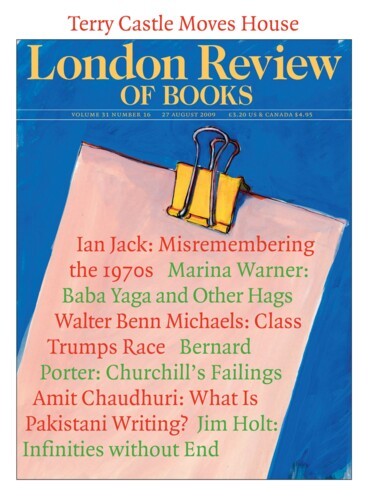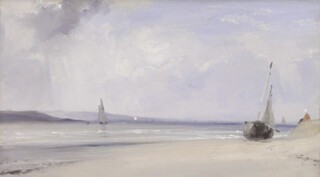Before going down to the National Gallery’s Corot to Monet: A Fresh Look at Landscape from the Collection (until 20 September), it is worth first going upstairs to take in the evening light of Claude Lorrain’s images of a golden age and the ordered recession from tree to temple in Nicolas Poussin’s Virgilian pastorals. The exhibition down below chronicles a flirtation with rough and inharmonious reality that would eventually challenge the compact those older painters made between art and beauty. To create the latter was their highest aim, and although the definition of beauty could take in new categories from time to time – the terrible, the sublime – a degree of poetry, an intimation of grandeur, was a necessary part of it.
When, as painting drew more on other paintings than on memory, imagined landscapes in this tradition began to lose their connection with real sunsets and seasons, painters who preferred looking to imagining had a chance to move to the front of the pack. The sources were to hand: 17th-century Dutchmen had shown that common sights could be as gratifying to the eye as dreams. So it is worth checking out the Ruisdaels too, before you piece together the story the pictures in Corot to Monet tell.
The small oil sketches of landscape painted from the 1780s that fill the first room are notes made on the spot. There are no concessions to high style: Pierre-Henri de Valenciennes’s Cow-shed and Houses on the Palatine Hill is composed as stolidly as a picture postcard; Thomas Jones’s A Wall in Naples is as uncompromisingly frontal as a surveyor’s photograph for an insurance claim: all you see is a wall, a door, a window, the top of what looks like a fig tree, some washing hung out to dry, and the sky. Yet these are pictures you return to with pleasure. The ones upstairs take you to imagined countries. Jones lets you enjoy an order perceived in, rather than imposed on, what was in front of him. He also lets you imagine what it would have been like to look over his shoulder as he sat on the roof of his lodgings in Naples working on his picture. That is what most people, even those who know it’s rude, want to do when they see a painter at his or her easel in a field. It is no way to look at a picture, of course: it would have done very little for your appreciation of their work to see what Soutine or Van Gogh were looking at. However, to have looked on while Corot painted his view of distant Avignon might have revealed an art whose precision gave it a watchable prowess as great as that of fiddle-playing or football.
The view of Avignon might also have reminded you how skinny the central elements in many famous views turn out to be. In such records of the world as it is, the most significant part of some scenes – the Pope’s Palace in Corot’s Avignon from the West, for example, or the Claudian aqueduct in The Roman Campagna of 1826 – are as long and thin as the indecipherable streak between sky and fields or sky and sand that turns up in any pile of holiday snapshots, disappointing versions of what are remembered as wonderful views of distant mountains or nearby sea. Paint defeats photography here because, I guess, it encourages you to get close and read the surface of the picture and the marks on it; the photograph leads you to no second level. Constable’s oil sketches made on one side of the Channel and Bonington’s made on the other reveal how little you see when you sit looking out from a beach but also how, if the colour and mistiness where sky meets the horizon are right, and a few white streaks of surf adroitly placed, the graduated ribbon of blue on the canvas can still stand for the immensity of the ocean. In views like these, where interest is centred on the far middle distance, there was still the problem of what to do with wide strips of sky above and foreground below. A note about the Avignon picture in the book the National Gallery has published to go with the show notes that the slab of khaki vegetation in the foreground that pushes you back into the middle of the picture was laid on top of earlier, thinner detail: even what appear to be the truest of accounts may need a helping hand.*
The objective uninflected style of the oil sketch could be taken only so far. Pass on through the exhibition and you find two things happening to out-of-doors painting. The early pictures suggest that open-air sketching took place after breakfast on sunny days, that everyone was home by teatime and no one stayed out if rain threatened. The stormy landscapes by Théodore Rousseau and Georges Michel, a sunset by Daubigny and, in Courbet’s 1874 beach scene, red clouds on the horizon to the left and what looks like rain on the right are records of more adventurous excursions (always assuming that they were painted out of doors – even the Impressionists did a lot of work in the studio). Then there was the question of how to achieve a recognisable personal style. It didn’t seem necessary for studies, but did for exhibition pieces that needed to display individual character. Poetry and drama creep back in. The sketches in the first room are from many hands, and it is not always easy to guess who did which. Excavation of the Roman Theatre, Orange, France is a late example labelled ‘first half of the 1850s, French (?)’. Any of half a dozen names could plausibly be attached to it. Corot – he is the outstanding example – forsook sharp light for river mists when he developed a line in poetic landscapes like The Leaning Tree Trunk, in which birch trees fall at elegant angles and small figures control the progress of the eye as it wanders from and returns to a woman with a red headdress. This was something done from memory. Daubigny, who did a lot of painting out of doors, had a studio boat built (Le Botin); it is moored in the middle distance of River Scene with Ducks, where it offers the spot of red punctuation supplied in several of Corot’s paintings by caps. But in Daubigny, sketchiness, which the Impressionists will push to a limit that will seem shocking, begins to trade precision for mood.
It is not just the weather that gets surly in the paintings. You are also taken into darker places: the forest of Fontainebleau in pictures by Diaz and Rousseau can seem heavy with shadows even below blue skies. And then one gets out of the wood and arrives at the seaside. The white umbrellas and coloured skirts in Boudin’s beach scenes, friezes of holidaymakers so far off that you feel Boudin must have been hiding in the dunes, point the way to Impressionism. With his friend Monet’s The Beach at Trouville of 1870 the path comes full circle, for here once again is a transcription as direct as Thomas Jones’s laundry and crumbling plaster, but done more broadly and confidently.
When Impressionism too lost its drive, landscape painting from life took a new turn and Poussin-like clarity of structure reasserted itself. But that lies beyond the end of this exhibition – to carry on you must go upstairs again and search out the Seurats and Cézannes.
Send Letters To:
The Editor
London Review of Books,
28 Little Russell Street
London, WC1A 2HN
letters@lrb.co.uk
Please include name, address, and a telephone number.


